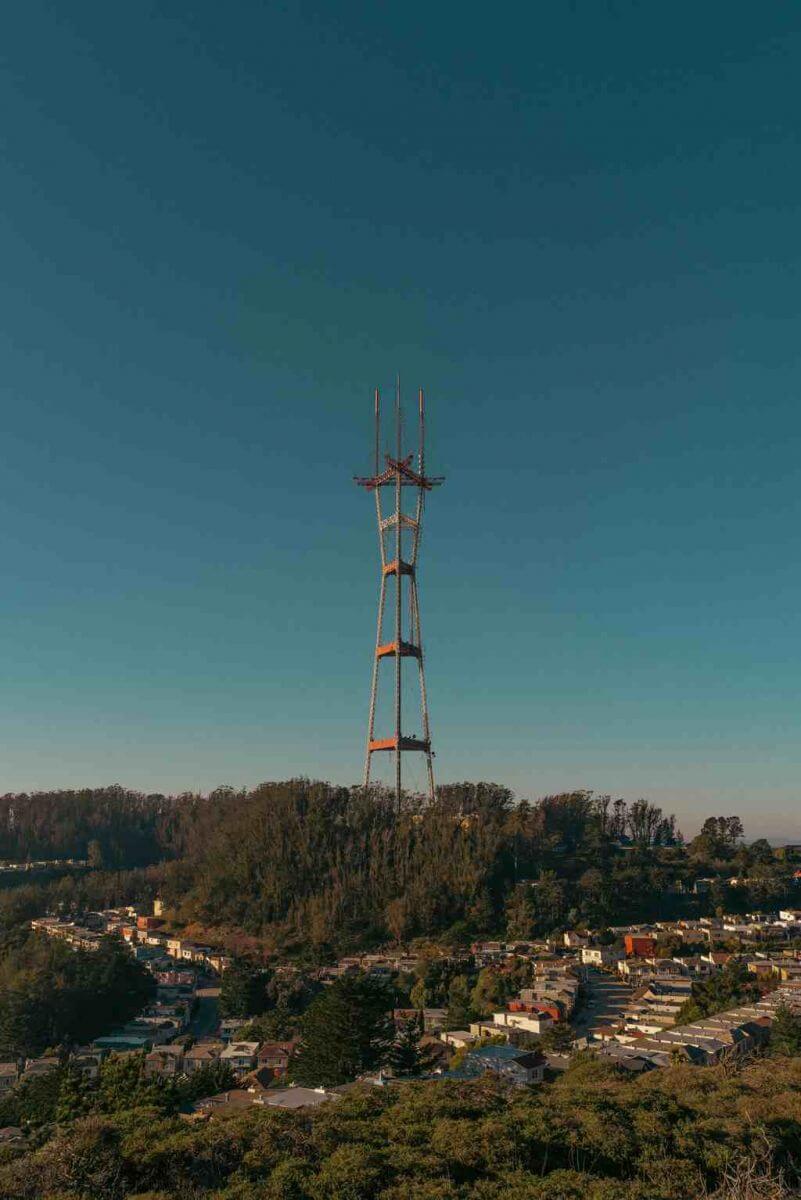- About us
- Product
- Dual-Junction Circulator
-

Dual-junction Microstrip Circulator
-

Dual-junction Drop-in Circulator
-

Dual-junction Coaxial Circulator
- Customized
- Technical Note
- News
- Contact us
NEWS
Updated on:
Keywords: RF Circulators for 5G Base Station, Signal Integrity, System Reliability, Microwave Circulator, RF Isolator, High-Power RF, Sub-6GHz, mmWave
Elevating network performance through advanced non-reciprocal RF components.

5G base station macro site, Shanghai — via Wikimedia Commons (CC BY-SA). Source
As 5G scales globally, radio units (RUs) and active antenna units (AAUs) face unprecedented stress: wideband operation, tighter EVM targets, elevated transmit power, and dense antenna arrays. In this context, RF circulators—non-reciprocal ferrite devices that route energy directionally among the Tx, ANT, and Rx ports—become quiet but critical guardians of signal integrity and system reliability. They reduce reflections, shield sensitive receivers, and stabilise the front-end against real-world mismatch.
Circulators are not merely "passive plumbing." Their insertion loss, isolation, and mismatch tolerance ripple through the entire RF budget—impacting coverage, efficiency, heat, and mean time between failures (MTBF).
Tx → ANT → Rx, suppresses self-leakage
Shields LNAs from back-power and compression
Mitigates PIM and desense, improves SINR
Shared antenna architectures, large MIMO arrays, and dynamic beam steering increase the likelihood of non-ideal matches in the field. By steering reflected energy away from the receiver path—or absorbing it in the isolator variant—circulators reduce the noise floor impact and preserve uplink sensitivity. Even a 0.2 dB change in insertion loss can alter effective radiated power (ERP) and thermal load in macro deployments.
Low IL (e.g., ≤ 0.3–0.5 dB for many Sub-6 radios) conserves PA output, boosts EIRP, and lowers site energy. Materials, magnetic biasing, and transmission-line geometry determine IL and flatness across the operating band.
Isolation of 20–30 dB (or higher) limits Tx leakage into the Rx chain—crucial for LNA linearity, IMD control, and uplink sensitivity. Stability across temperature and aging is equally important.
Real antennas detune with ice, moisture, or physical stress. Circulators must survive and perform under these mismatches, avoiding PA over-stress and ripple in the passband.
Macro sites confront high CW and substantial peak power. Proper thermal paths, low magnetic drift, and validated peak ratings are core to long-term stability.
SMT and compact drop-in variants align with AAU stacking and manufacturability. Coaxial or waveguide designs serve higher power or specialised links. Mechanical design and magnet placement affect both performance and serviceability.
In 3.3–4.2 GHz deployments, circulators balance PA efficiency and Rx linearity. Combining low IL with high isolation extends cell radius, reduces desense events, and improves KPI stability. When paired with directional couplers and quality duplexing, the front-end sustains robust EVM across load variations.
Above 24 GHz, arrays shrink yet thermal and dispersion effects intensify. Angle-steering, package parasitics, and temperature drift require meticulous material selection and bias control to maintain isolation and matching across scan angles.
Circulators complement band-defining filters and duplexers. The combined chain manages reflections and PIM, while maintaining spectral masks and in-band linearity. Optimised layouts reduce mutual coupling and improve serviceability.
Every watt not reflected is a watt not converted to unwanted heat or stress. By improving return-loss behaviour and limiting back-power into sensitive stages, circulators help radios run cooler, extend component lifetimes, and reduce field failures. Operators benefit through improved site uptime, lower truck-rolls, and more predictable upgrade cycles.
Explore related components and guides: Typical Microstrip Circulators · Typical Drop-in Circulators · Sub-6 Microstrip Portfolio
Looking to match a circulator to your 5G band, power class, and AAU layout? Get a Quick Spec Match
Sites pursuing maximum coverage often tune IL and isolation for optimal EIRP and uplink sensitivity. A carefully selected circulator can recover tenths of a decibel in the link budget—amplified across large antenna arrays—translating into avoided densification and lower energy use.
Rooftops and street furniture face frequent mismatch events due to environmental changes. Rugged circulators with stable temperature coefficients mitigate KPI swings, reduce LNA compression incidents, and stabilise EVM during busy hours.
In FR2 small cells, packaging parasitics and thermal concentration challenge reliability. Compact circulators with low drift, attention to bias magnetics, and well-engineered heat paths maintain performance across beam-scan and seasonal cycles.
Next-generation circulators will leverage improved magnetic materials, reduced-loss substrates, and tighter process controls. At the system level, expect deeper integration with filters and switches in front-end modules, and increased telemetry for health monitoring. As research explores >100 GHz links toward 6G, compact non-reciprocal devices—or functional equivalents— will be pivotal to sustain integrity at extreme bandwidths.
An isolator is a circulator with the third port internally terminated in a matched load, so reflections are absorbed rather than re-routed to the next port. Isolators are commonly used to protect PAs and LNAs from back-power.
No. Duplexers provide frequency separation of Tx/Rx paths, while circulators address directionality and reflections within a given band, reducing risk of desense and IMD even when duplexing is present.
Many designs aim for ≤0.3–0.5 dB across the operating band, balancing material limits, thermal budgets, and manufacturing tolerances. The optimal target depends on PA efficiency and EIRP goals.
SMT or compact drop-ins are common in AAUs due to density and manufacturability. Coaxial or waveguide units address higher power or specialised interface requirements.
About the Author
HzBeat Editorial Content Team
Sara is a Brand Specialist at Hzbeat, focusing on RF & microwave industry communications. She transforms complex technologies into accessible insights, helping global readers understand the value of circulators, isolators, and other key components.